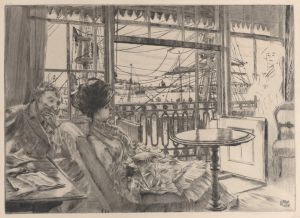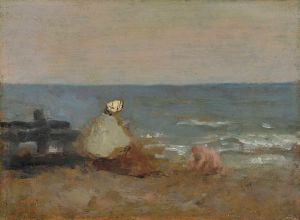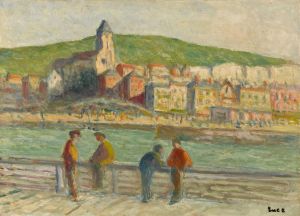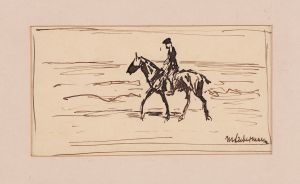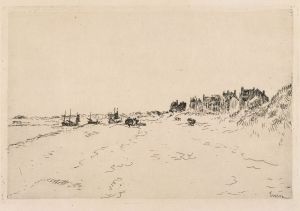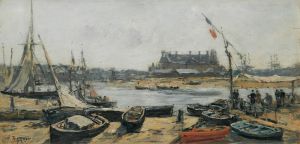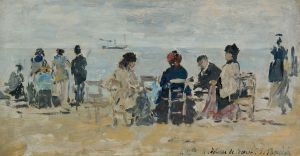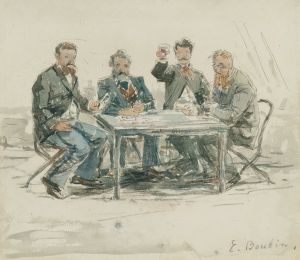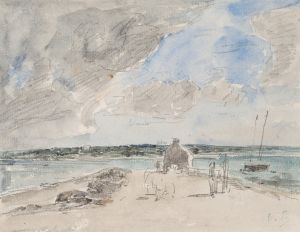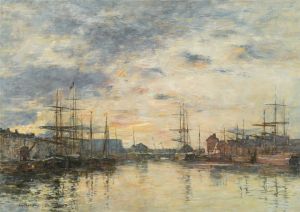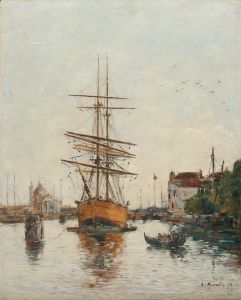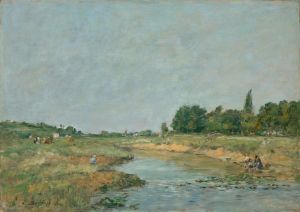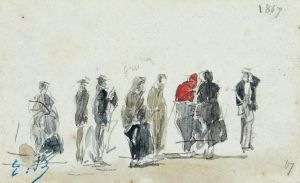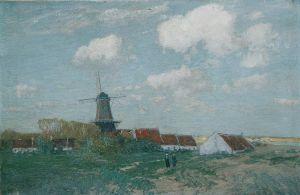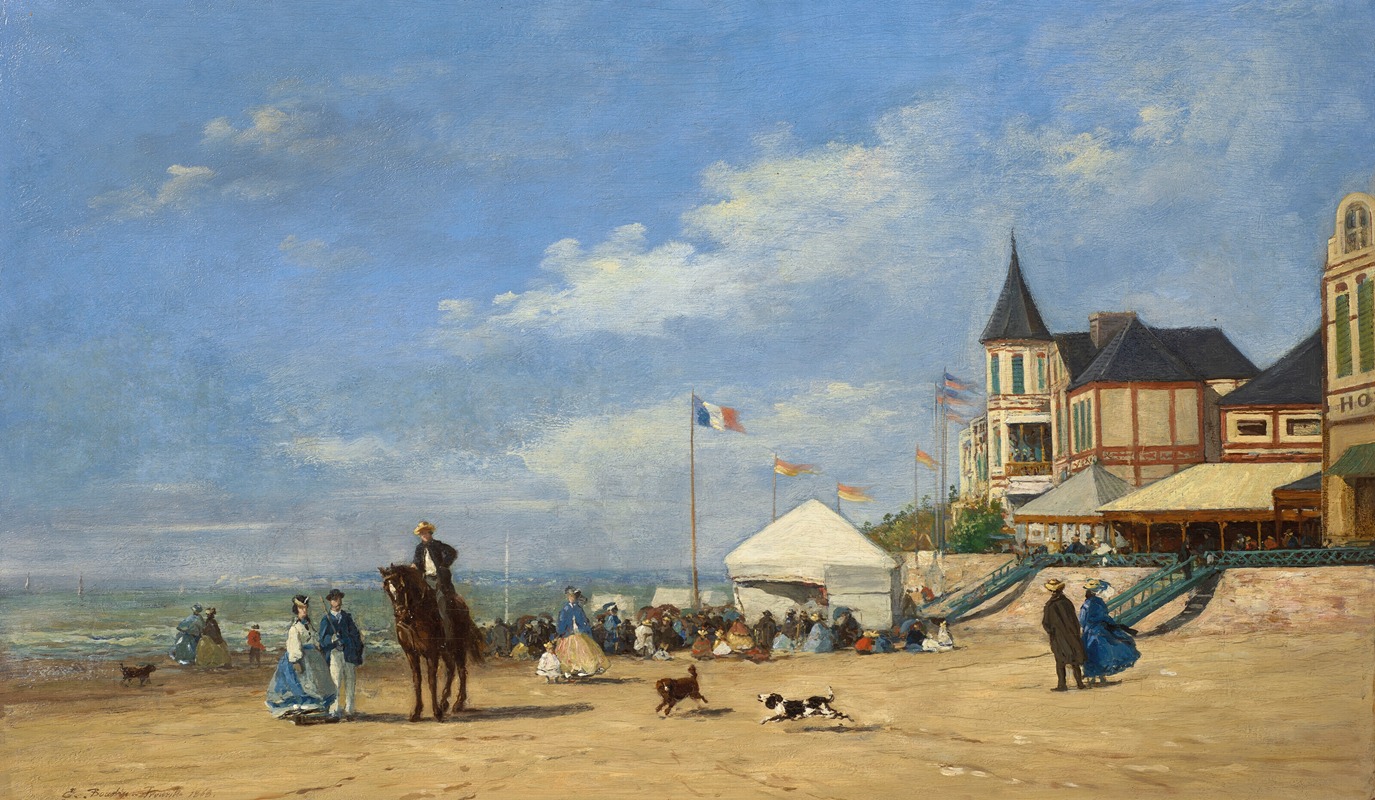
La plage de Trouville
A hand-painted replica of Eugène Boudin’s masterpiece La plage de Trouville, meticulously crafted by professional artists to capture the true essence of the original. Each piece is created with museum-quality canvas and rare mineral pigments, carefully painted by experienced artists with delicate brushstrokes and rich, layered colors to perfectly recreate the texture of the original artwork. Unlike machine-printed reproductions, this hand-painted version brings the painting to life, infused with the artist’s emotions and skill in every stroke. Whether for personal collection or home decoration, it instantly elevates the artistic atmosphere of any space.
La plage de Trouville (The Beach of Trouville) is an oil painting created by the French artist Eugène Boudin, one of the most prominent precursors of Impressionism. Painted in 1864, this work exemplifies Boudin's mastery in capturing the atmosphere and light of coastal scenes, a subject for which he became widely known. The painting depicts a lively beach scene at Trouville-sur-Mer, a popular seaside resort in Normandy, France, during the 19th century.
Boudin was born in Honfleur, a town near Trouville, and was deeply inspired by the landscapes and coastal life of the Normandy region. His works often focused on the interplay of light, sky, and water, as well as the leisurely activities of people enjoying the seaside. In this painting, Boudin portrays a group of elegantly dressed figures strolling or resting on the beach, a reflection of the growing popularity of seaside tourism among the bourgeoisie during this period. The figures are painted with loose, fluid brushstrokes, emphasizing movement and the fleeting nature of the moment.
The composition of La plage de Trouville is dominated by the expansive sky, a hallmark of Boudin's style. The sky occupies a significant portion of the canvas, filled with soft, dynamic clouds that convey a sense of changing weather and light. The muted tones of the sand and sea contrast with the brighter colors of the figures' clothing, creating a harmonious balance in the painting. Boudin's ability to depict the subtle variations of light and atmosphere earned him the admiration of his contemporaries, including Claude Monet, who credited Boudin as a major influence on his own artistic development.
This painting is part of Boudin's extensive series of beach scenes, which he began in the 1860s. These works not only document the social customs of the time but also demonstrate his innovative approach to plein air painting, a technique that involved working outdoors to capture natural light and color. Boudin's dedication to painting en plein air was instrumental in the development of Impressionism, and his works are often seen as a bridge between the Barbizon School and the Impressionist movement.
Today, La plage de Trouville is housed in the Musée d'Orsay in Paris, France. The museum, renowned for its collection of 19th-century art, includes several of Boudin's works, showcasing his significant contributions to the evolution of modern painting. This particular piece remains a testament to Boudin's skill in capturing the ephemeral beauty of nature and the leisurely charm of seaside life.





